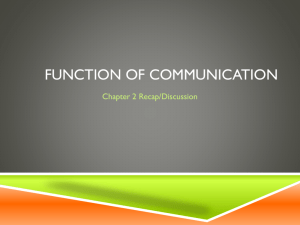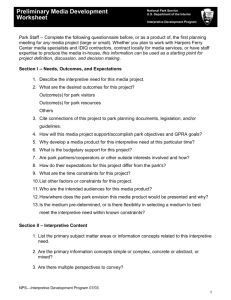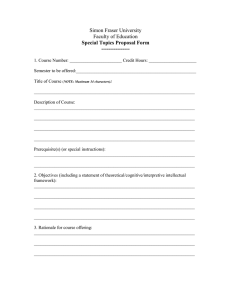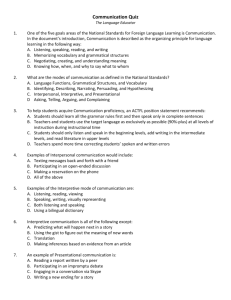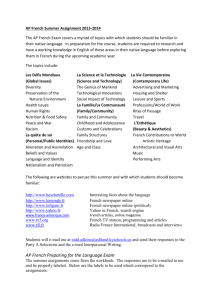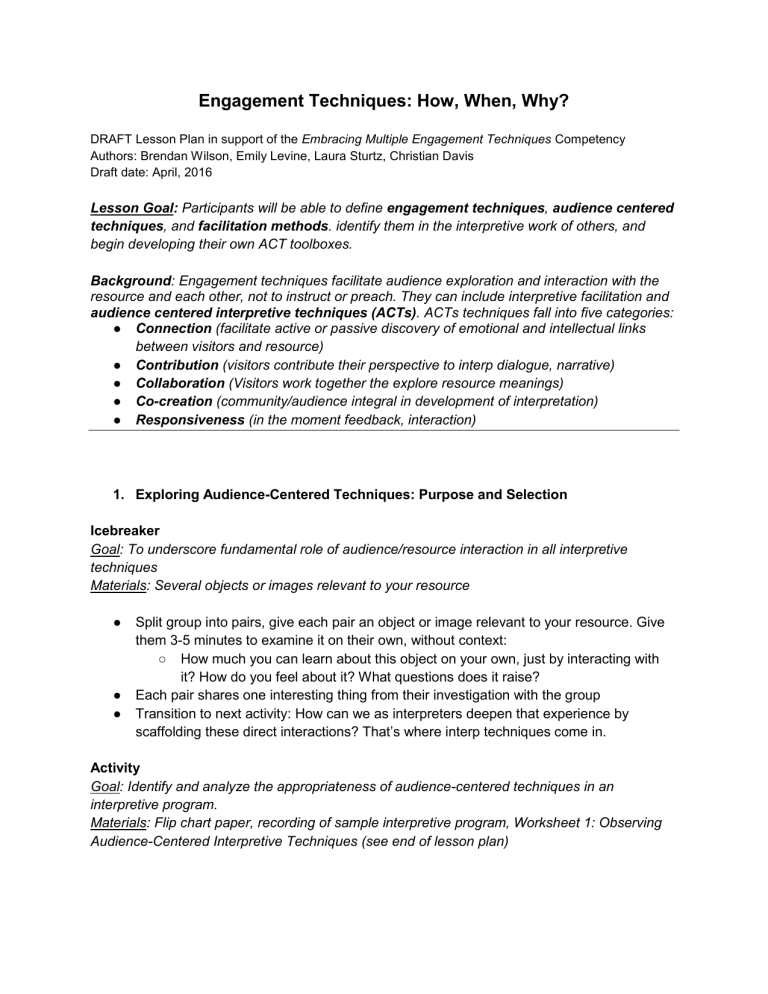
Engagement Techniques: How, When, Why? DRAFT Lesson Plan in support of the Embracing Multiple Engagement Techniques Competency Authors: Brendan Wilson, Emily Levine, Laura Sturtz, Christian Davis Draft date: April, 2016 Lesson Goal: Participants will be able to define engagement techniques, audience centered techniques, and facilitation methods. identify them in the interpretive work of others, and begin developing their own ACT toolboxes. Background: Engagement techniques facilitate audience exploration and interaction with the resource and each other, not to instruct or preach. They can include interpretive facilitation and audience centered interpretive techniques (ACTs). ACTs techniques fall into five categories: ● Connection (facilitate active or passive discovery of emotional and intellectual links between visitors and resource) ● Contribution (visitors contribute their perspective to interp dialogue, narrative) ● Collaboration (Visitors work together the explore resource meanings) ● Co-creation (community/audience integral in development of interpretation) ● Responsiveness (in the moment feedback, interaction) 1. Exploring Audience-Centered Techniques: Purpose and Selection Icebreaker Goal: To underscore fundamental role of audience/resource interaction in all interpretive techniques Materials: Several objects or images relevant to your resource ● ● ● Split group into pairs, give each pair an object or image relevant to your resource. Give them 3-5 minutes to examine it on their own, without context: ○ How much you can learn about this object on your own, just by interacting with it? How do you feel about it? What questions does it raise? Each pair shares one interesting thing from their investigation with the group Transition to next activity: How can we as interpreters deepen that experience by scaffolding these direct interactions? That’s where interp techniques come in. Activity Goal: Identify and analyze the appropriateness of audience-centered techniques in an interpretive program. Materials: Flip chart paper, recording of sample interpretive program, Worksheet 1: Observing Audience-Centered Interpretive Techniques (see end of lesson plan) ● ● ● Group brainstorm: What’s an interpretive technique? [May omit for more advanced groups] What’s an audience centered technique? What more do you want to know about ACTs? (“Parking Lot” the responses for later discussion) ● Watch program [Suggested Program - Rocky Mountain Audience Centered Hike (Youtube video) or a live program at your site] and use Worksheet 1 to take notes on: ○ Theme or essential question ○ Use of specific ACTs ○ Use of interpretive techniques that are less audience-centered ● Split into groups of 3 or 4. What ACTs did people observe? Pick two and answer the following: ○ Describe the technique ○ Describe the connection it facilitated between audience and resource meanings ○ Did that connection relate to the program’s theme or essential question? ○ Was it appropriate for the audience and situation? ● Share your two ACTs (or pick one if short on time) with the larger group. ○ For each ACT shared, decide as a group if it reflects: Connection / Contribution / Collaboration / Co-creation / Responsiveness - record sorted list of ACTs on flip chart paper ● Get in new groups of 3-4, or use a fishbowl technique. What techniques did you observe that were less audience-centered? Pick one and answer the following: ○ Describe the technique ○ Describe the connection it facilitated between audience and resource meanings ○ Considering audience and situation, how might you make this technique more audience-centered? Small groups share out with larger group, or instructor facilitates fishbowl discussion Return to sorted list of ACTs on flip chart paper, and sort/record suggestions for making these techniques more audience-centered ● ● *Note to instructor: To help build out this lesson plan in more depth, share the information you recorded from the group shares concerning the techniques in this Connection / Contribution / Collaboration / Co-creation / Responsiveness Chart google doc: (add link) 2. Selection and Application of Appropriate Engagement Techniques Activity: ● Instructor presents the Arc of Dialogue model. Facilitate group discussion of appropriate stage of arc to invite people in, raise tension, or bring people back down for each technique. ● Further group discussion: In general, what makes a technique... ○ appropriate for resource? ○ appropriate for audience? ○ appropriate for ranger? Are you more comfortable with some techniques than others? Why? 3. Facilitation methods Goal: Identify/practice/incorporate basic facilitation methods to safely invite/encourage audience engagement Materials: Worksheet #2: Observing Facilitation Methods, whiteboard/flip chart Activity: Have group participate in a Facilitated Dialogue program - this could be a program offered to the public, a partial dialogue developed for this training, or any other format that fits your time and situation. ● ● ● While participating, observing the facilitator’s approach. Consider facilitation basics for any interpretive interaction: ○ Creating a shared understanding of role of interpreter as a facilitator ○ How did the interpreter sustain conversation among visitors? ○ Integrating ACTs and other engagement techniques ○ Body language, logistics ○ Building on more “traditional” or existing interpretive skills Group discussion: ○ How did it feel to be part of that program? ○ Discuss the difference between facilitation and traditional presentation as a group. Ask participants what techniques they saw used to “facilitate” or keep the discussion on track: ○ List answers on a whiteboard or flip chart paper ○ Instructor points out additional types of facilitation techniques used, if students missed any ○ Discuss / explain the benefits and drawbacks of various types of facilitation techniques observed. Additional References and Resources: The Interpretive Facilitator’s Toolkit, IDP website Co-creation Techniques for Facilitating Reflection and Expression, IDP handout Facilitated Dialogue Techniques Chart, IDP handout How to Craft Questions, handout from conversationcafe.org The Art of Powerful Questions: Catalyzing Insight, Innovation, and Action by Eric E.Vogt, Juanita Brown, and David Isaacs Worksheet 1: Observing Audience-Centered Techniques While you watch or participate in the interpretive program, take notes on the following: Theme or essential question Use of specific ACTs Use of interpretive techniques that are less audiencecentered After the program, pick two Audience-Centered Techniques you observed: #1 Describe the technique Describe the connection it facilitated between audience and resource meanings Did that connection relate to the program’s theme or essential question? Was it appropriate for the audience and situation? #2 Describe the technique Describe the connection it facilitated between audience and resource meanings Did that connection relate to the program’s theme or essential question? Was it appropriate for the audience and situation? Pick one technique that was less audience-centered: Describe the technique Describe the connection it facilitated between audience and resource meanings Considering audience and situation, how might you make this technique more audiencecentered? Worksheet 2: Observing Facilitation Techniques While participating in the Facilitated Dialogue program, observing the facilitator’s approach. How did the interpreter.. ...create a shared understanding of their as a facilitator? ...sustain conversation among visitors? ..integrate ACTs and other engagement techniques? ...demonstrate effective body language and program logistics? ...build on more “traditional” interpretive skills?


